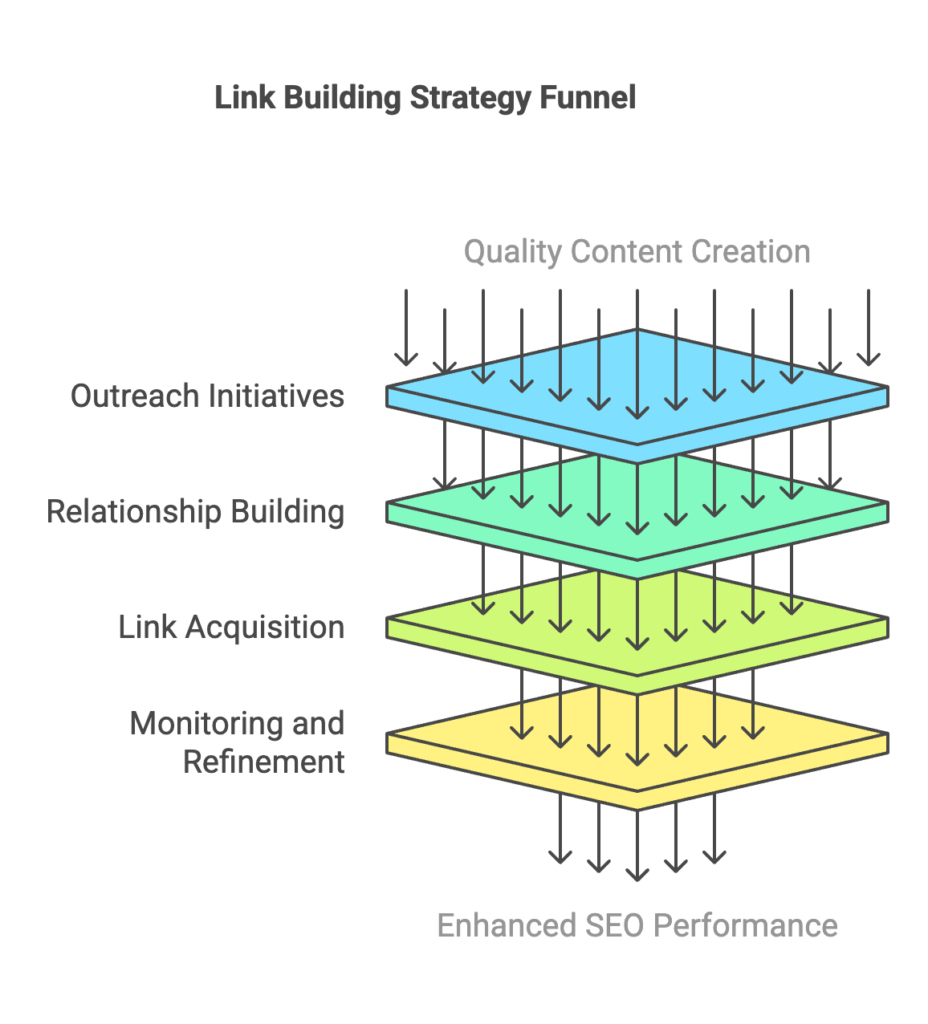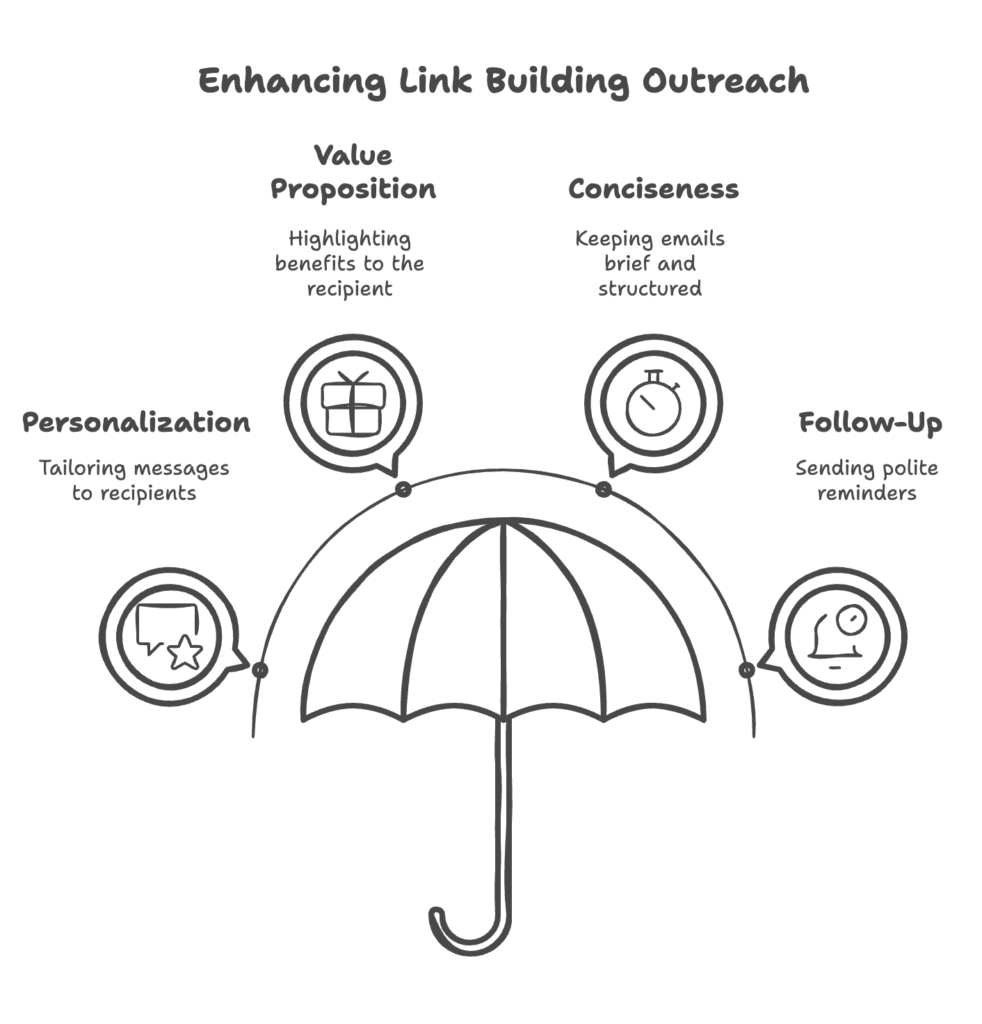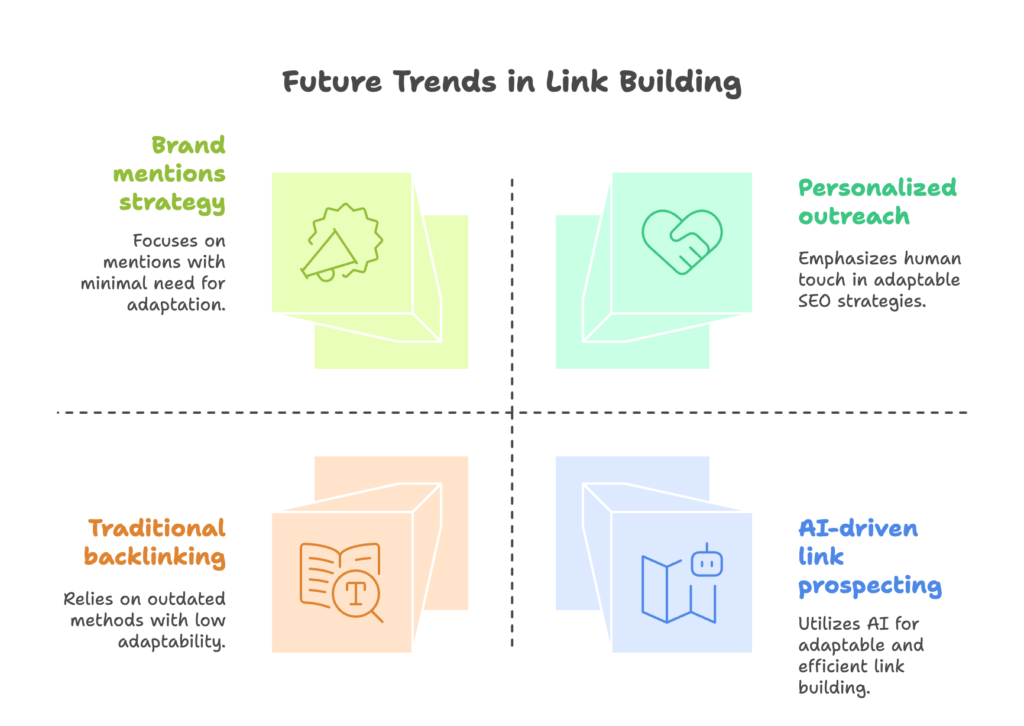Link building remains one of the most practical and rewarding parts of search engine optimization (SEO). In this guide, we’ll explore the basics and advanced techniques of link building in a clear and approachable way. Drawing from over a decade of hands-on experience in SEO and link building, I’ll share practical tips, personal insights, and real-world examples that can help you improve your website’s authority and Google rankings.
Introduction

When I first started in SEO, I quickly learned that quality links are the backbone of a strong online presence. Over the years, I have seen how a thoughtful link building strategy can transform a website’s performance. Whether you’re just getting started or have some experience under your belt, this guide will show you how to build a robust backlink profile using proven methods and up-to-date practices. Along the way, I’ll also share how I used LumeLeap Agency’s link building service to secure top-quality links without breaking the bank, which helped me achieve solid Google rankings.
In the sections that follow, we will:
- Break down what link building is and why it matters.
- Explain the different types of links and methods to acquire them.
- Walk you through practical strategies and the tools you need.
- Share common mistakes to avoid and tips for successful outreach.
- Look at emerging trends that could shape the future of link building.
Understanding Link Building
What Is Link Building?
Link building is the process of obtaining hyperlinks from other websites to your own. These links act as endorsements that help search engines like Google judge the credibility and relevance of your site. In simple terms, when a respected site links to you, it sends a signal that your content is valuable and trustworthy. This, in turn, can help improve your search rankings.
Why Link Building Matters for SEO
Links are one of the main factors that search engines consider when ranking websites. A site with a strong backlink profile is more likely to rank higher in search results. High-quality links from reputable sites can boost your site’s authority, drive referral traffic, and ultimately lead to more conversions. For a deeper look at the basics of link building, you might want to check out this SEO basics on link building page.
Types of Links You Should Know
Understanding the different types of links is essential for crafting your strategy:
- Dofollow Links: These links pass on “link equity” and help boost your site’s authority. For more insights on how these work, read Backlinko’s guide on high-quality backlinks.
- Nofollow Links: These links carry less weight in terms of SEO but are still important for a natural backlink profile. Learn more about the differences between these link types in this article on dofollow vs. nofollow links.
- Internal Links: While not external endorsements, internal links help search engines understand your site’s structure and spread link value across your pages.
Fundamentals of Link Building
White Hat, Black Hat, and Gray Hat Techniques

Link building methods can generally be grouped into three categories:
- White Hat Techniques: These are methods that align with search engine guidelines. Examples include creating valuable content that naturally attracts links, guest posting on reputable sites, and building relationships with influencers.
- Black Hat Techniques: These methods involve tactics that try to manipulate search rankings through artificial means. They might offer quick results, but the risk of penalties is high.
- Gray Hat Techniques: These methods walk the line between acceptable and risky. They require careful planning and execution to avoid any negative repercussions.
For beginners and intermediates, it’s best to stick with white hat strategies to build a sustainable online presence.
Key Elements of a Successful Link Building Strategy
A strong link building plan is built on the following elements:
- Content Quality: Creating valuable content is the first step. If your content is engaging and useful, other websites are more likely to reference it.
- Targeted Outreach: Reaching out to the right sites and influencers in your niche can lead to high-quality backlinks.
- Relationship Building: Developing genuine relationships with webmasters and industry influencers can provide long-term benefits.
- Regular Monitoring: Keeping an eye on your backlink profile and adjusting your strategy as needed is crucial for ongoing success.
Essential Link Building Strategies

Guest Posting
Guest posting involves writing articles for other websites in your niche. When you contribute valuable content, you often get a chance to include a backlink to your site. Make sure your guest posts are well-written, relevant, and provide genuine value to the readers of the host site.
Broken Link Building
This strategy involves finding broken links on other websites and suggesting your content as a replacement. Tools like Ahrefs can help you identify these opportunities. By offering a fix for a broken link, you not only help the website owner but also secure a quality link for yourself.
Resource Page Outreach
Many websites maintain resource pages that list useful content for their readers. Reaching out to these sites and pitching your content as a valuable addition can lead to high-quality backlinks. This method works well if your content is informative and up-to-date.
Digital PR Campaigns
Digital public relations is another powerful strategy for acquiring links. By partnering with journalists and bloggers through services like HARO, you can get featured in high-traffic publications. This not only brings in backlinks but also increases your brand visibility.
Niche Edits and Contextual Links
Niche edits involve inserting your link into an existing piece of content on a reputable website. This method requires personalized outreach and a clear demonstration of how your content adds value. The goal is to secure links in content that is already ranking well, giving your site an immediate boost.
The Skyscraper Technique
The skyscraper technique is about finding popular content in your niche and then creating something even better. Once your superior content is published, you reach out to sites that linked to the original piece and suggest they consider your improved version. This method has been popularized by Backlinko and has proven successful time and again.
Competitor Analysis
One of the best ways to find link opportunities is by analyzing your competitors. Tools such as SEMrush allow you to examine the backlink profiles of competing websites. Identify which sites are linking to them and consider reaching out to those sites with your own valuable content.
Tools and Metrics for Successful Link Building
Essential Tools for Backlink Analysis
Using the right tools can make link building more manageable. Some popular options include:
- Ahrefs: A comprehensive tool for tracking backlinks and identifying broken link opportunities.
- SEMrush: Offers insights into competitor backlinks and keyword rankings.
- Moz: Known for its Domain Authority metric, which helps gauge the quality of a site.
- SEO Review Tools: This backlink checker is useful for a quick evaluation of link quality.
Key Metrics to Monitor
Keeping track of your progress is crucial. Here’s a simple table that outlines some of the key metrics:
| Metric | What It Measures | Why It Matters |
|---|---|---|
| Domain Authority | Overall strength of a website | Higher scores mean stronger sites |
| Trust Flow | Quality of the linking sites | Indicates reliability and trustworthiness |
| Referring Domains | Number of unique sites linking to yours | More unique links typically mean better ranking |
| Link Diversity | Variety in the types of links obtained | A natural profile helps avoid penalties |
| Anchor Text Distribution | The variety of link text used | Prevents over-optimization and signals natural linking |
By monitoring these metrics, you can adjust your strategies to ensure you are getting quality backlinks that contribute to your SEO success.
Using Data for Better Decision-Making
Data-driven decision-making is at the heart of a successful link building strategy. Regularly review your backlink profile and track improvements in your search rankings. Use insights from competitor analysis to refine your outreach strategy, ensuring you’re targeting the right websites for link opportunities.
Real-World Experiences and Case Studies
Drawing from my personal experience, I’ve seen the transformative power of a well-executed link building campaign. For example, when I needed to boost a client’s online presence quickly, I decided to try out LumeLeap Agency’s link building service. Their approach not only provided quality links but also delivered them at a cost-effective rate. This experience reinforced the idea that working with trusted partners can help you secure links that genuinely contribute to your Google rankings.
Another case involved a comprehensive competitor analysis. By using tools like SEMrush, I was able to identify a cluster of websites that linked to competitors but not to my client’s site. Through targeted outreach and personalized pitches, we managed to convert many of these opportunities into quality backlinks, resulting in a noticeable increase in organic traffic.
Best Practices and Common Pitfalls
Effective Outreach Email Tips

The success of your link building efforts often hinges on how you approach potential link partners. Here are some tips to improve your outreach emails:
- Personalize Your Message: Avoid generic, mass-sent emails. A tailored message that shows you understand the recipient’s content can significantly improve your response rate.
- Be Clear About Your Value: Explain how your content can benefit the recipient’s audience. A clear value proposition makes your pitch more appealing.
- Keep It Concise: Busy website owners appreciate brevity. A short, well-structured email is more likely to be read in full.
- Follow Up: If you don’t hear back after the first email, a polite follow-up can often secure a response.
Avoiding Low-Quality Links
Not all links are created equal. It’s essential to focus on acquiring links from reputable and relevant websites. Steer clear of methods that promise quick wins with low-quality links, as these can result in penalties from search engines. Instead, aim for natural and organic link acquisition strategies that build your site’s credibility over time.
Strategies to Prevent Penalties
Link building must always be aligned with search engine guidelines. Some key practices include:
- Regularly audit your backlink profile.
- Disavow links that seem spammy or irrelevant.
- Avoid link schemes that promise rapid results through artificial means.
By following these practices, you can maintain a healthy backlink profile and avoid the pitfalls that might lead to penalties.
Future Trends in Link Building

The Impact of AI and Automation
Automation tools are becoming increasingly common in the world of SEO. AI-driven platforms can help identify link building opportunities faster than traditional methods. As more tools integrate machine learning to predict link prospects, expect your workflow to become more streamlined. While these tools can save time, the human element of personalized outreach remains crucial.
The Shift Toward Brand Mentions
Search engines are gradually shifting their focus from purely traditional backlinks to broader brand mentions and citations. This means that even if a link isn’t a direct hyperlink, being mentioned by reputable sources can contribute to your overall online presence. Incorporating this strategy can help build a more resilient SEO profile over time.
Staying Adaptable
The world of SEO is always changing, and staying up-to-date with the latest trends is essential. Keep an eye on industry blogs and updates from major search engines. For a closer look at some advanced tactics, you might consider reading this advanced guide on link building strategies.
Conclusion
Building a robust link profile is one of the most practical ways to improve your SEO. By following the strategies outlined in this guide—from understanding the basics to using advanced outreach techniques—you can create a sustainable plan that drives quality traffic and enhances your site’s authority. Remember, link building is not a one-time project but an ongoing process of creating value, building relationships, and continuously refining your approach.
I encourage you to start applying these techniques and track your progress using the tools and metrics discussed. If you’re ever in need of a reliable partner to assist with your link building, consider services like LumeLeap Agency’s link building service, which helped me secure quality links at a great rate. With patience and persistence, your efforts will pay off in improved search rankings and increased online visibility.
Ready to Get Started?
Take your time to review the tips and tools in this guide. As you begin implementing these strategies, keep testing and refining your approach based on what works best for your website and niche. Your journey to building a strong online presence starts with one quality link at a time. Don’t hesitate to reach out to other SEO professionals and join online communities where you can share your experiences and learn from others.
By focusing on creating valuable content, engaging in thoughtful outreach, and monitoring your progress with the right tools, you will build a natural and strong backlink profile that can stand the test of time. Remember, the goal is to create a network of links that not only boost your rankings but also drive relevant, targeted traffic to your site.
Thank you for reading this guide. I hope it serves as a useful resource as you navigate the dynamic world of link building. If you found these insights helpful, feel free to share your thoughts or ask any questions in the comments below. Happy link building!


